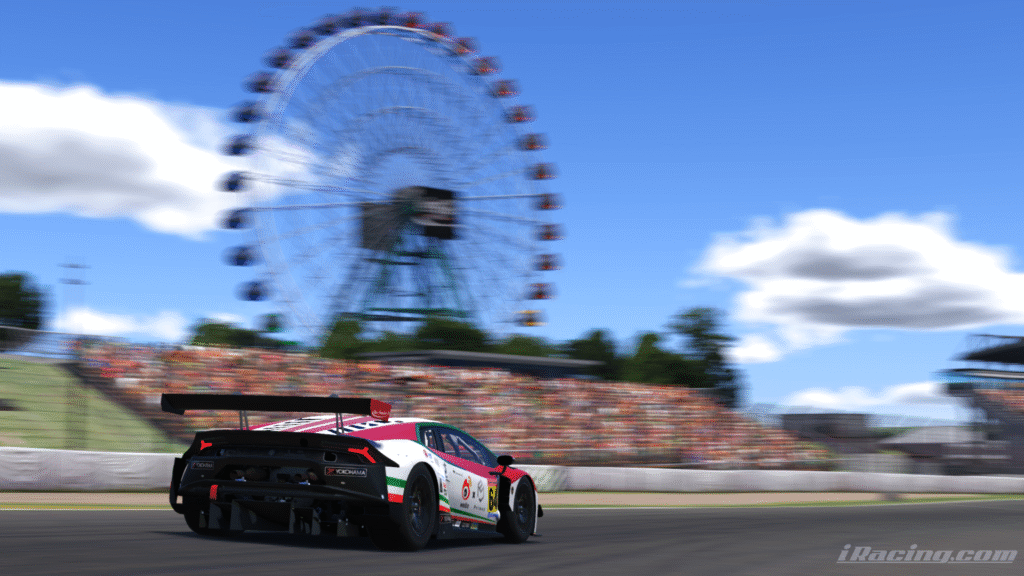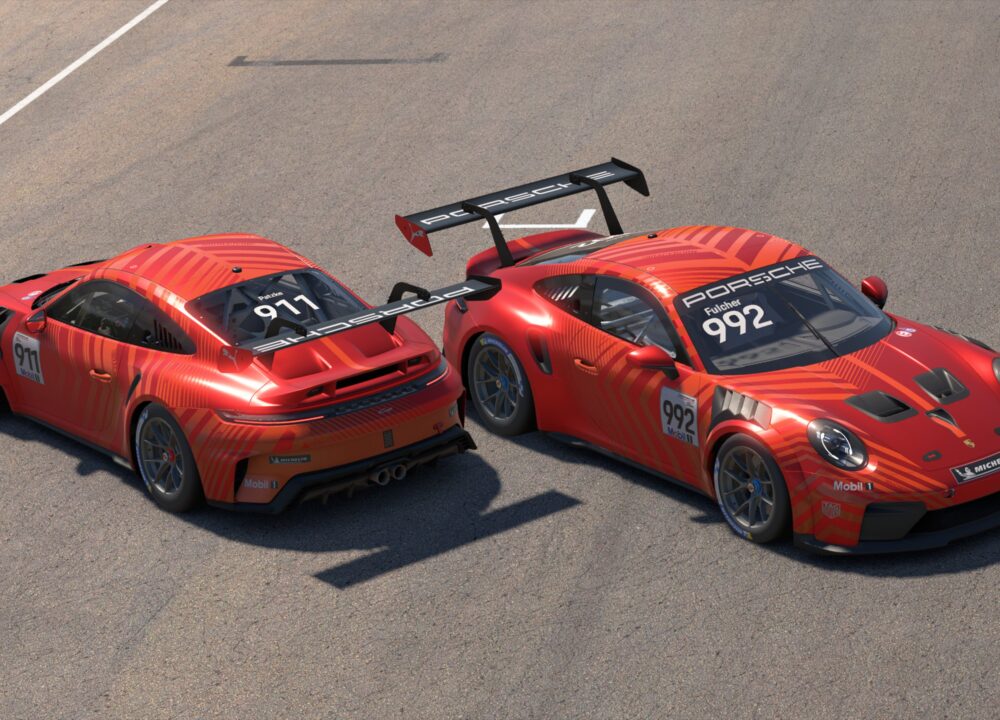With Christmas quickly closing in, the 2025 iRacing Special Event calendar is meandering its way to a conclusion. That doesn’t mean the racing will get any less intense, though, and the upcoming Suzuka 1000km is a perfect illustration of this.
Contested around one of the most challenging circuits in the world, the Suzuka International Circuit, the Suzuka 1000km will force GT3 drivers to deal with plenty of adversity to claim the ultimate prize.
The traditional November Japanese encounter moves back to the track for the first time since 2022, with the last couple of editions using the Fuji International Speedway instead.
This Coach Dave Academy guide will run you through everything you need to know about the iRacing classic.
When is the Suzuka 1000km held?
The iRacing Suzuka 1000km endurance race is usually contested in mid-November, a couple of months after the real event takes place.
In 2025, the event will take place across the November 14th-16th weekend, with the first races on Friday and the last on Sunday.
A total of five time slots are available to partake in across three days. The sessions available are as follows:
- Friday: 10 PM GMT
- Saturday: 8 AM GMT, 12 PM GMT, 4 PM GMT
- Sunday: 12 AM GMT
How is the Suzuka 1000km structured?
The five time slots are designed to suit drivers from all over the world, giving everybody the chance to run the race at a time that better moulds to their normal day.
- The Friday GMT slot is great for North and South American racers, as it will be run during the day in these nations
- The early Saturday morning GMT splits are ideal for Australasian drivers
- The main pro split will be run at 12 PM on Saturday, which will also better suit drivers from European regions, or those from other nations who prefer early/late race times
If you have less experience, other splits will be less busy and will put you up against fewer high-end drivers - The Sunday 00:00 GMT fixture also works well for American pilots, given it will take place in the late afternoon
- Getting involved in the earliest split possible will be beneficial, as this will give you the ideal chance to make up for any technical issues or crashes that take you out in earlier attempts
The event takes place as a team contest, meaning a minimum of two drivers are required to take part. If you enjoy racing in a large team, a maximum of 16 racers can enter per squad.
What License Is Needed To Race?
As the Suzuka 1000km is a special event, every driver simply needs to possess a D 4.0 road licence to take part. This means that you only need to progress from a rookie road licence to be eligible to sign up.
- Drivers will be sorted into splits via an average of their total iRating
- This means that teams with several A-rated drivers and only a single C-Level racer, for example, will be put into higher-rated splits
- This is worth bearing in mind, as your potentially slower and less experienced teammate will have to go up against higher-rated drivers than they’re used to racing with
- Taking part in the Suzuka 1000km represents a great chance to boost your iRating and Safety Rating, especially if you’re at a lower license level
- This could allow you to move up a licence level or two, which will grant you access to a wide range of new daily racing categories
Escaping the Rookie licence level is pretty straightforward, as you’ll simply need to campaign enough races in entry-level series before being granted your D road racing licence.
- Focus on getting to the end of races in Rookie series like Formula Vee and Mazda MX-5 Cup
- Limiting your number of incident Xs through the race will allow you to achieve quick and efficient gains, so avoid track cutting and contact where possible
If you’re unsure about how to go about how to progress to the correct license level, refer to Coach Dave Academy’s license guide.
What is Suzuka?
Suzuka is one of the trickiest circuits in the world, mainly due to its technical and tight nature. There is very little room for error due to the Honda-owned venue offering very limited run-off, with the edges of most of the corners lined with grass and gravel instead of tarmac like most modern circuits.
The track has been home to some of the world’s most prolific racing series, such as Formula 1. It has hosted the Japanese Grand Prix most years since 1987, and has also hosted FIA GT and the World Touring Car Championship in the past.
Suzuka is notoriously difficult to overtake at, with many of its corners being high-speed in nature. Due to its unforgiving reputation, the best way to make a pass is usually to heap pressure on the driver in front and force them into a mistake, which should allow you through or at least set up a pass. Should this fail, a dive up the inside into the Turn 10 Hairpin and the Turn 17 Casio Triangle turns are your best bet.
The latter move will be dependent on you getting a good run through the legendary 130R left-hander, a high-speed sweep that separates the brave from the meek.
The Cars
GT racing fans will relish taking to the grid for the Suzuka 1000km, as the field is made up purely of cars from the GT3 class.
What is the GT3 class?
GT3 is the authoritative GT racing class around the globe, with the category being the primary GT class in series such as the World Endurance Championship, IMSA SportsCar Championship and the various GT Challenge fixtures.
A total of 11 GT3 vehicles are currently available in iRacing, and all are eligible for the 2025 Suzuka 1000km. Each is subjected to iRacing’s Balance of Performance measures, which ensures that each car has an equal chance of success.
What makes the GT3 class so appealing is that each car features a unique engine, from the unit’s respective design to where it is mounted in the vehicle. This affects how each car drives, with mid-engined cars like the Ferrari 296 GT3 and Chevrolet Corvette Z06.R being more agile, and front-engined machines like the BMW M3 GT3 EVO offer more stability.
- If you aren’t sure which GT3 could be the perfect one for you, check out Coach Dave Academy’s guide to the best GT3 cars in iRacing.
| Acura NSX GT3 Evo 22 | Twin-turbocharged 3.5-liter V6 |
| Aston Martin Vantage GT3 EVO | Twin-turbocharged 4.0-liter V8 |
| Audi R8 LMS Evo II GT3 | Naturally-aspirated 5.2-litre V10 |
| BMW M4 GT3 EVO | Twin-turbocharged 3.0-litre straight-six |
| Chevrolet Corvette Z06 GT3.R | Naturally-aspirated 5.5-liter V8 |
| Ferrari 296 GT3 | Twin-turbocharged 3.0-litre V6 |
| Ford Mustang GT3 | Naturally-aspirated 5.4-litre V8 |
| Lamborghini Huracan GT3 Evo | Naturally-aspirated 5.2-litre V10 |
| McLaren 720s GT3 Evo | Twin-turbocharged 4.0-litre V8 |
| Mercedes-AMG GT3 2020 | Naturally-aspirated 6.2-litre V8 |
| Porsche 911 GT3 R 992 | Naturally-aspirated 4.2-litre flat-six |
Need some setups?
We have setups ready in Delta right now for all GT3 cars competing in the Suzuka 1000km special event. Win with Coach Dave Academy.
- Sports, Formula & Oval iRacing Setups
- Race Telemetry - Brake, Throttle & Racing Lines
- Corner by Corner AI Coaching To Gain Seconds
- Challenge Racers on the Delta Leaderboards
Race Format and Strategy
Before embarking on surviving 1000km of the legendary Suzuka circuit, each team will have to nominate a driver to post a qualifying lap. Each driver will have two flying laps to set their best effort, which needs to be completed within the eight-minute session. Once the grid for the encounter has been locked in, the race will get underway with a rolling start procedure.
Track Conditions
The Suzuka 8 Hours features iRacing’s full dynamic weather system, meaning the track can change drastically during the race. This shows itself in a number of ways, such as the surface rubbering in as the event progresses, which increases the amount of grip. Cloud cover can cool the track down and also cause balance changes.
Inclement weather can also cause issues, as rain will quickly turn the tide of the race.
- Testing before the race will be crucial, as each driver will need to feel confident driving the car around the track in a variety of conditions
- Making sure you find a consistent car balance is key, as a car that changes drastically in different conditions will cause wild swings in pace, and potentially increase the chances of a crash
- Keeping calm and consistent when the weather changes is key, as other drivers will likely make mistakes, giving you a great chance to move forward simply by staying on the track in the hardest moments
Consistency
Consistency is arguably the most important element you’ll need to infuse into your driving while competing in an endurance race. Balls-out laps are great for qualifying, but will usually lead to tiredness and mistakes during a full race stint.
- Maintaining a good, consistent rhythm will keep some brain power in reserve, which will be key for keeping in the game over a long race
- Driving consistently will also help preserve the vehicle, especially when it comes with tyres over longer runs
- Do it well, and you’ll be able to move past other drivers as they use up their stuff by pushing over the limit for too long
- Coach Dave Academy’s Never Lift guide is on hand to make sure that you get the most from your driving in a range of conditions. Tips and tricks picked up from the guide could easily prove to be the difference between victory and defeat.
Traffic
Another key element you’ll have to look out for in a long endurance race, such as the Suzuka 1000km, is traffic. Even in a single-class event such as this, you’ll likely have to start dealing with traffic, either from slower lapped cars ahead or faster ones trying to lap you from behind.
- Learn to mitigate risk by passing in the least dodgy places, such as along straights
- If you’re being lapped, make sure to lose as little time as possible to maximize your own race time, rather than falling towards chasing cars by battling with leaders who are much quicker anyway
- Just breathing off the throttle so that you can slip in behind is usually the optimal strategy if possible
- Make sure to remain as calm as possible if some drivers don’t fancy moving over, just get the job done as cleanly and efficiently as possible, and focus forward
Final Thoughts
As long as you keep all these tips in mind, you should put yourself in a strong position for success in the closing stages of the encounter. This is especially true at a venue such as Suzuka, which will doubtless claim many victims due to its unforgiving nature as the race goes on.
Keep things clean, and you’ll be surprised just how highly you can finish.
- Sports, Formula & Oval iRacing Setups
- Race Telemetry - Brake, Throttle & Racing Lines
- Corner by Corner AI Coaching To Gain Seconds
- Challenge Racers on the Delta Leaderboards






